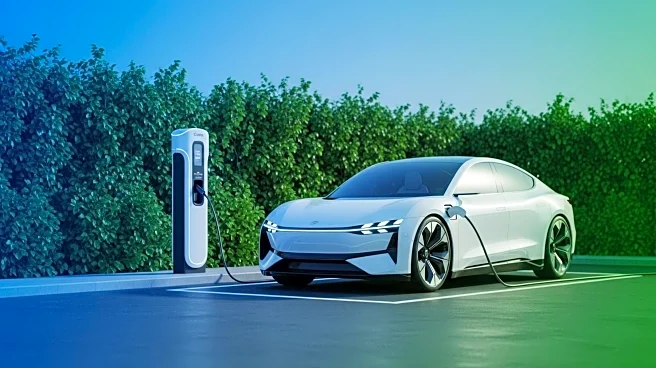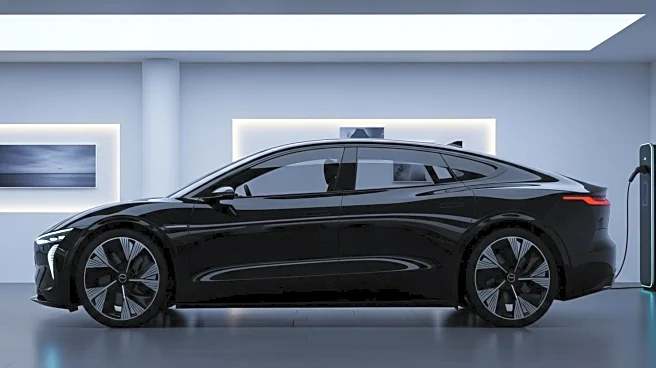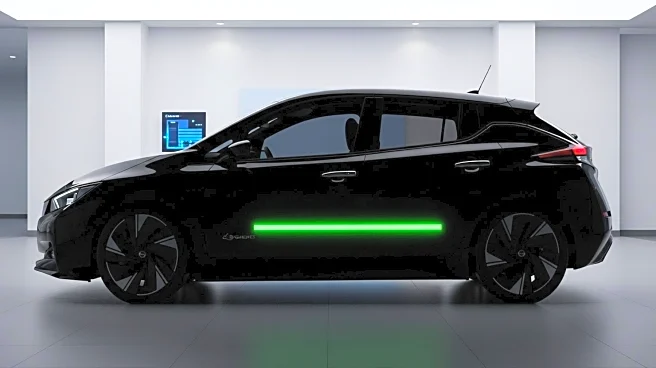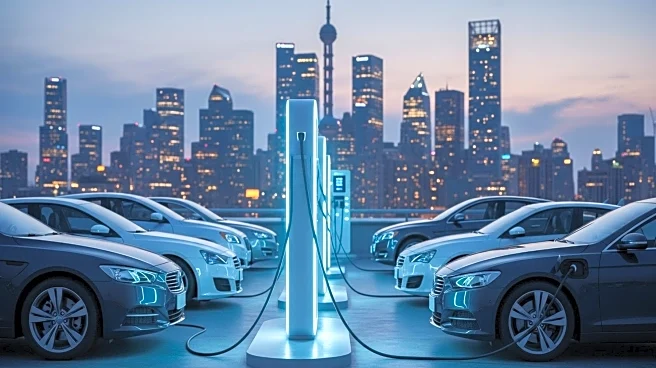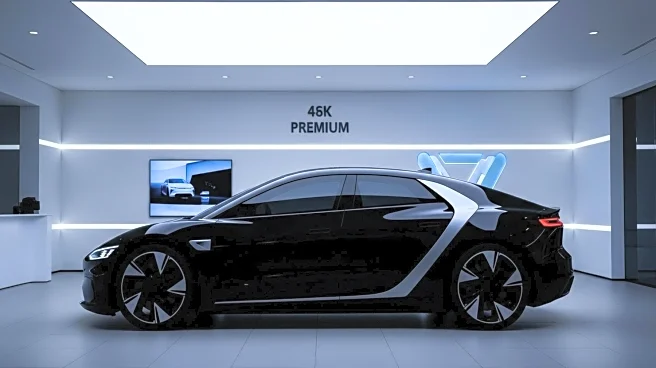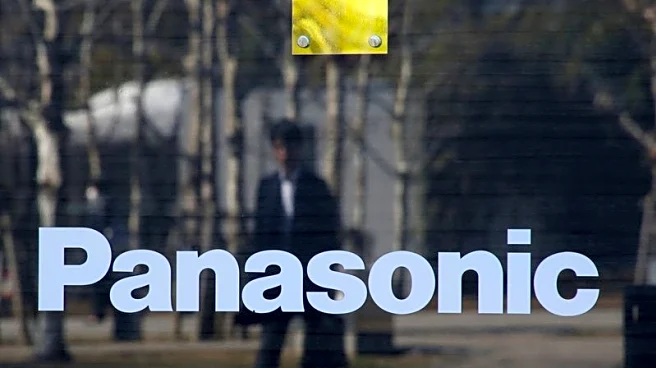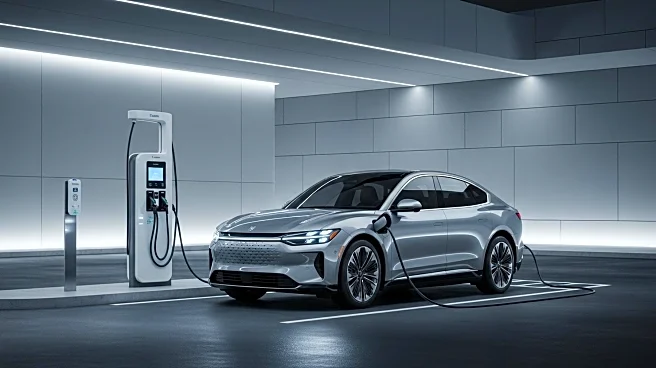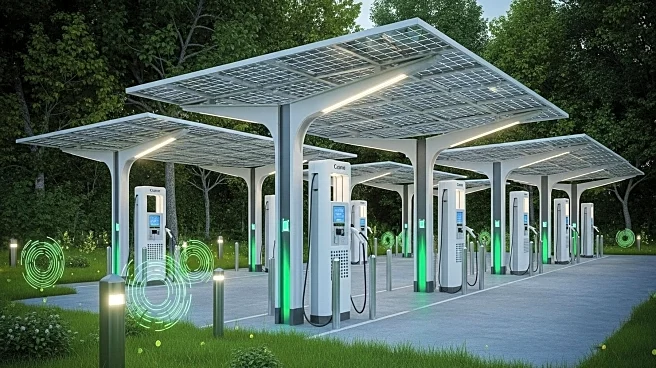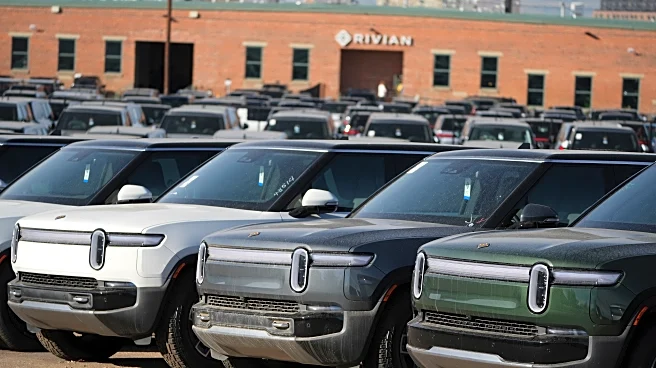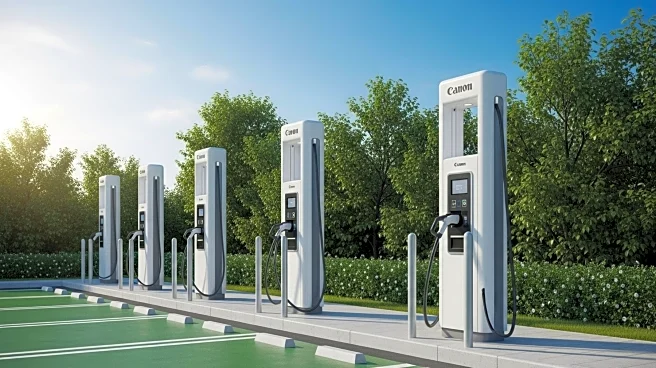What's Happening?
Nissan has introduced the 2026 LEAF, featuring a comprehensive redesign aimed at improving aerodynamics and efficiency. The new model includes dual charging ports, allowing compatibility with both Tesla's Superchargers and public AC chargers. The LEAF's exterior has been updated with aerodynamic lines and a spoiler to enhance its drag coefficient, improving from 0.29 to 0.26. The vehicle offers different trim levels, with the top-tier PLAT+ providing a range of 259 miles, while the mid-tier S+ extends this to 303 miles per charge. The interior boasts luxurious materials and advanced infotainment systems, including dual screens for navigation and entertainment. The LEAF is set to arrive in dealerships in fall 2025, with prices starting at $29,999 for the S+ trim.
Why It's Important?
The introduction of the 2026 Nissan LEAF marks a significant step in the evolution of electric vehicles, particularly in terms of charging infrastructure compatibility. By incorporating dual charging ports, Nissan addresses the current hybrid landscape of EV charging standards, potentially easing the transition for new EV users. The improved range and aerodynamic design enhance the vehicle's appeal, offering consumers a practical and efficient option for both daily commuting and longer journeys. This development could influence other automakers to adopt similar strategies, promoting wider acceptance and integration of electric vehicles in the U.S. market.
What's Next?
As the 2026 LEAF enters the market, Nissan may face challenges related to educating consumers about the dual charging system and its benefits. The company might also explore further enhancements to streamline charging options, potentially phasing out older standards in favor of a unified system. Additionally, Nissan's decision to phase out the ARIYA in the U.S. could lead to strategic shifts in their EV lineup, focusing more on affordability and range optimization. Stakeholders, including consumers and charging network providers, will likely monitor these developments closely.
Beyond the Headlines
The dual charging port system in the 2026 LEAF highlights broader issues in the EV industry regarding standardization and consumer education. As charging infrastructure evolves, automakers must balance innovation with user-friendly solutions. This move by Nissan could spark discussions on the future of EV charging standards and the role of automakers in shaping these trends. Furthermore, the LEAF's design and pricing strategy may influence market dynamics, encouraging competition and potentially driving down costs for consumers.

